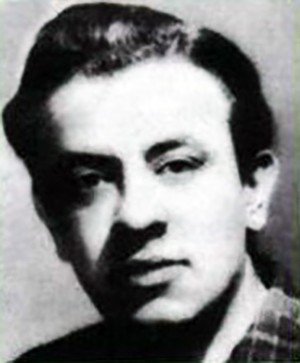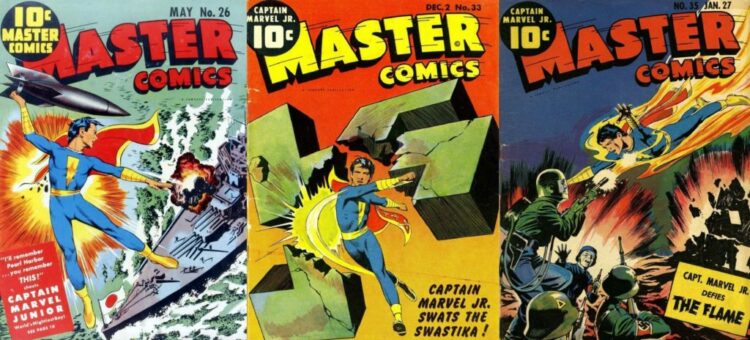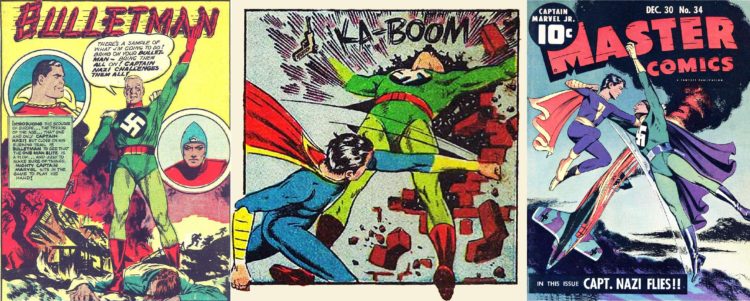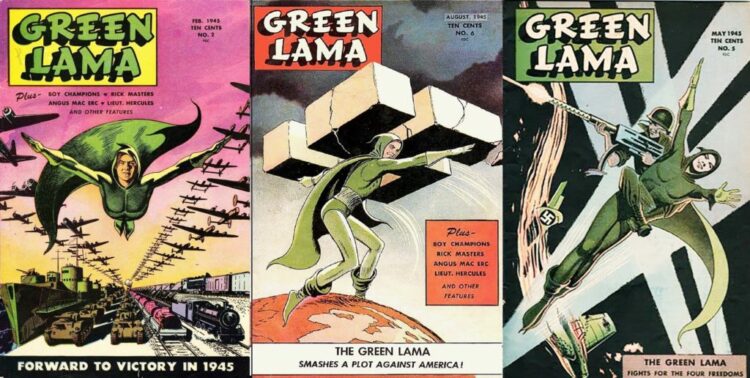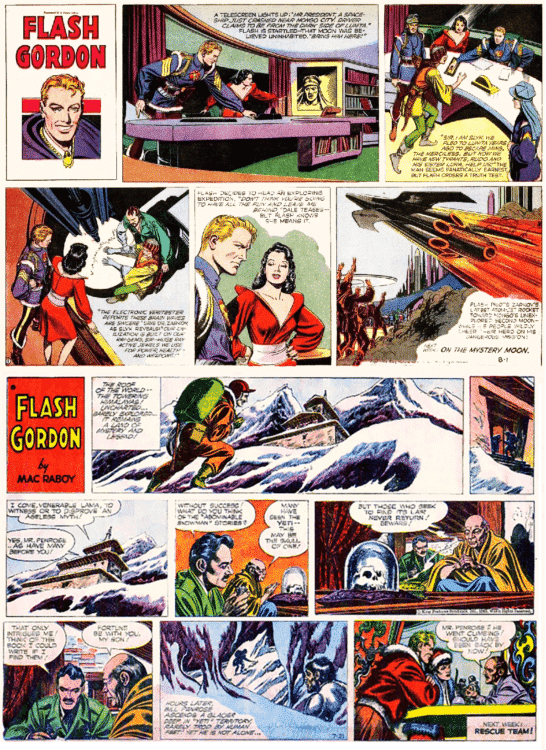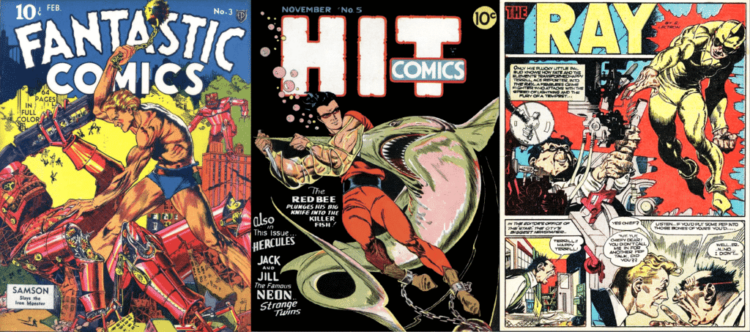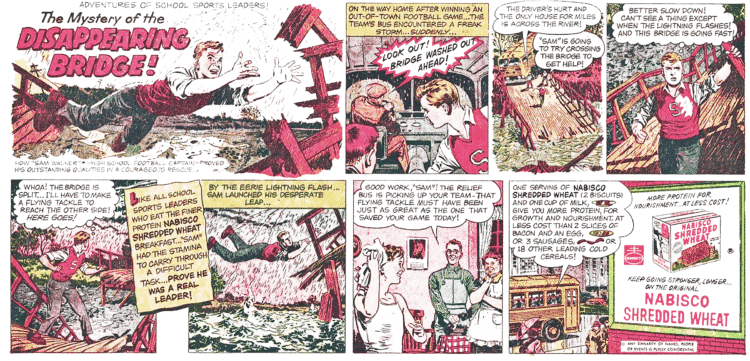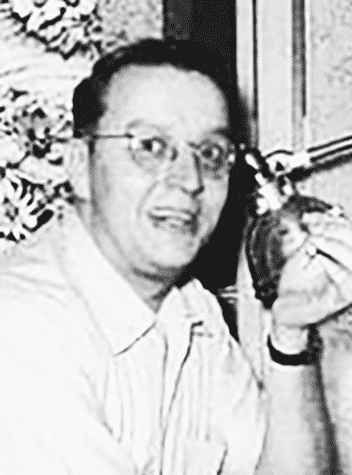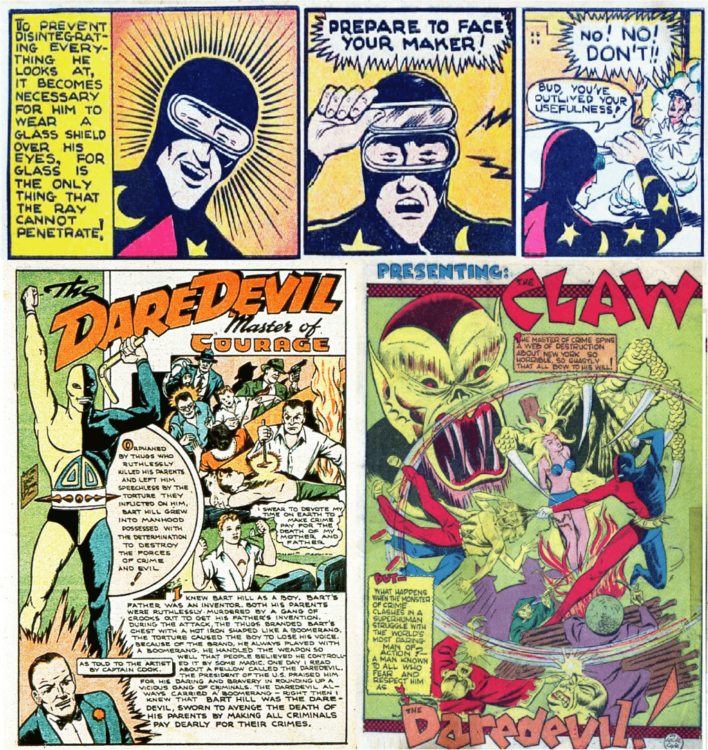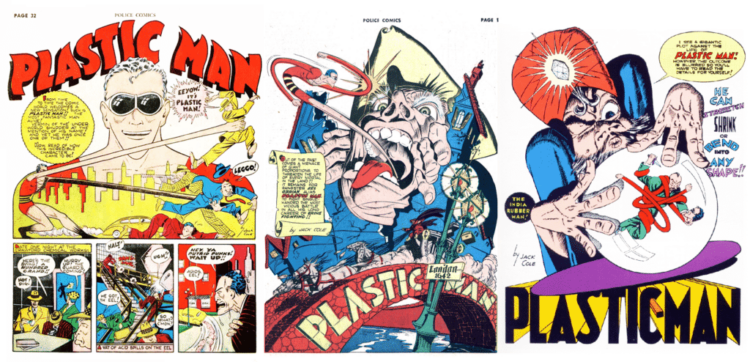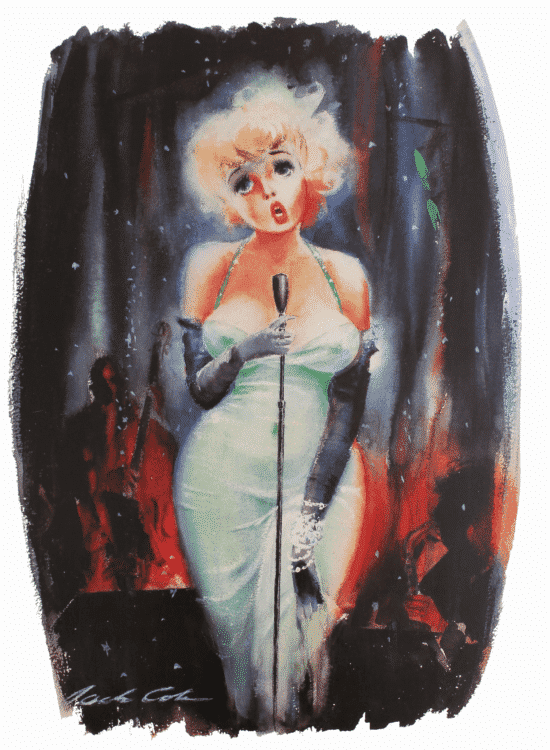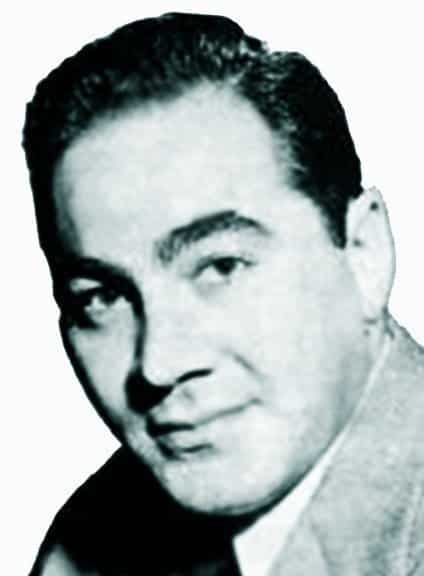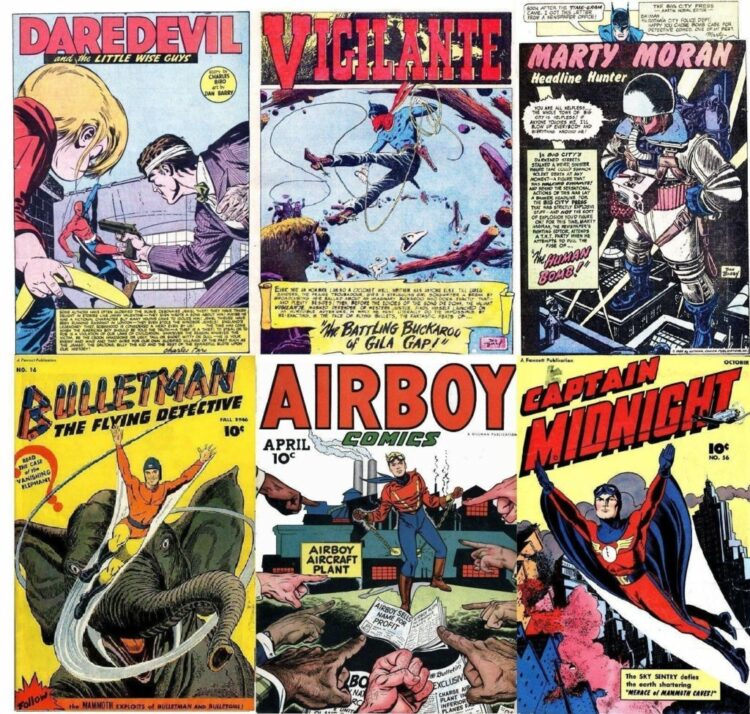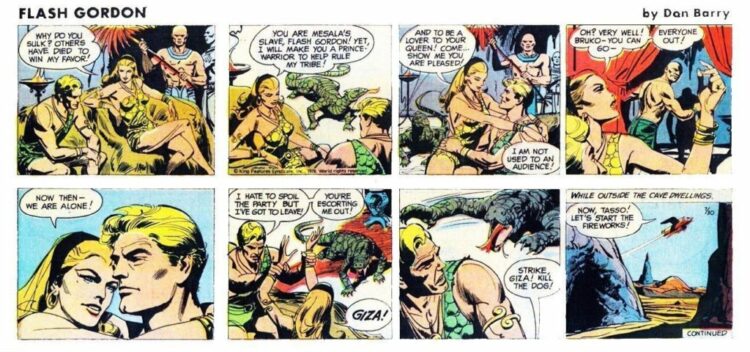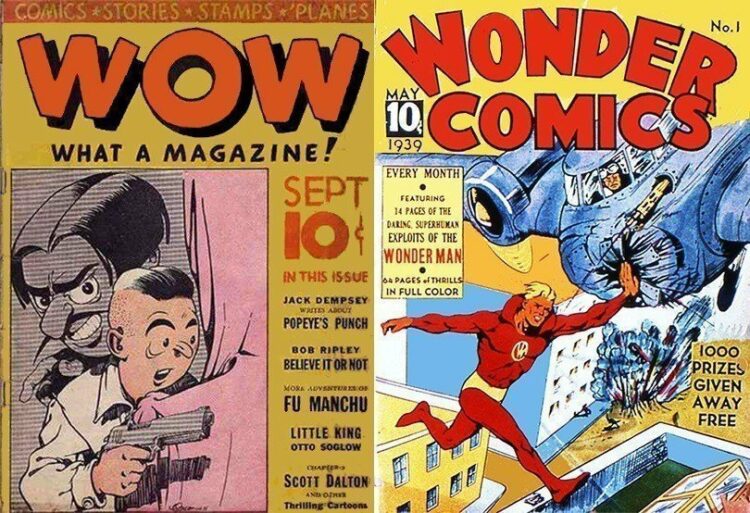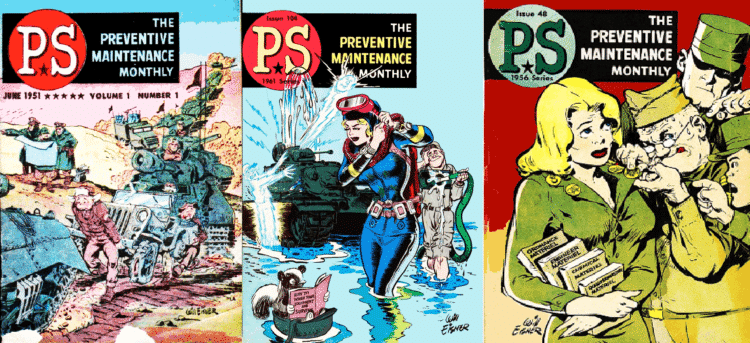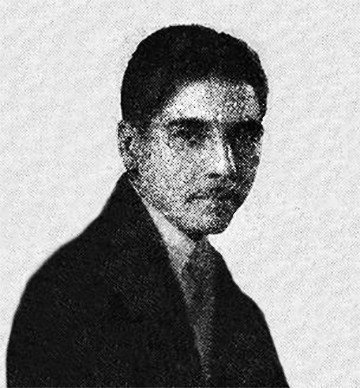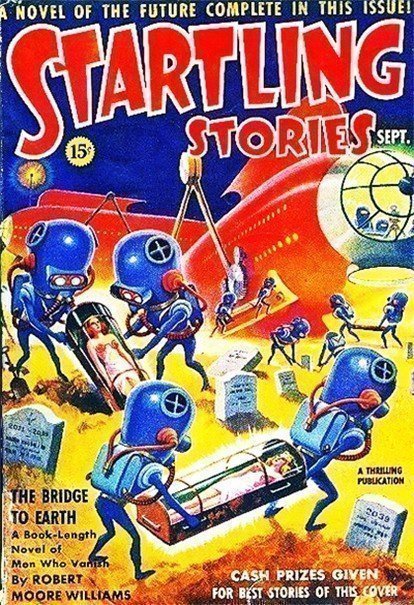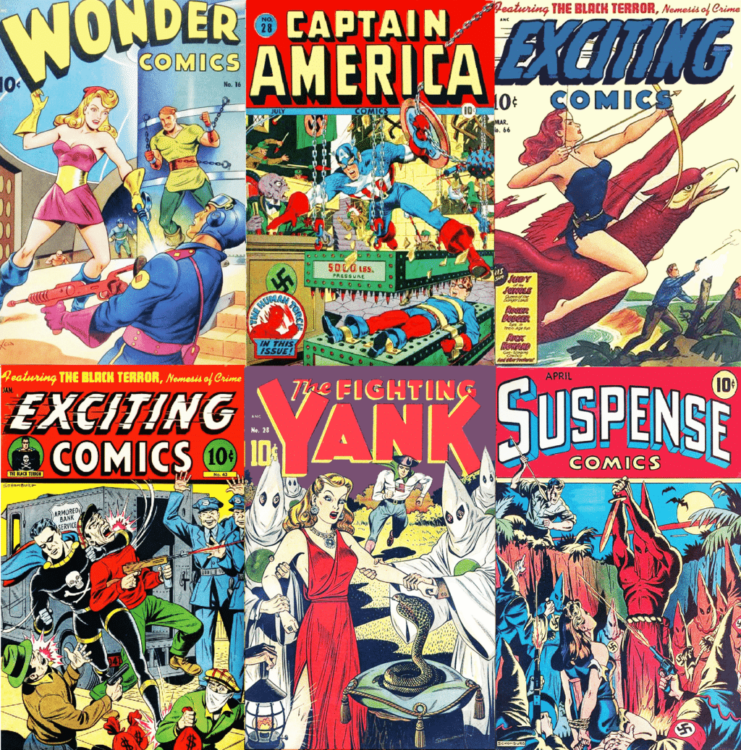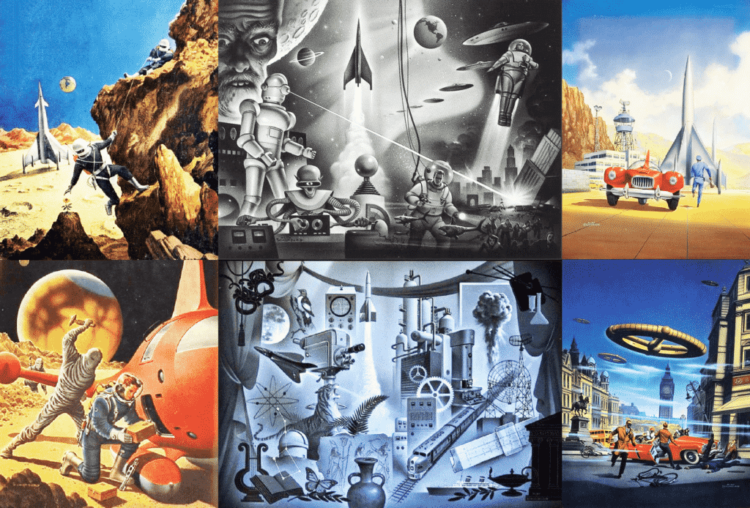What Happened to Key Golden Age Artists as the Silver Age Was Around the Corner by Alex Grand
Read Alex Grand’s Understanding Superhero Comic Books published by McFarland Books in 2023 with Foreword by Jim Steranko with editorial reviews by comic book professionals, Jim Shooter, Tom Palmer, Tom DeFalco, Danny Fingeroth, Alex Segura, Carl Potts, Guy Dorian Sr. and more.
In the meantime enjoy the show:
We tend to separate the Ages by fan preference in genre, however one strong factor is also a change in aesthetic in an industry when the old guard leaves and new people come in.
Like we mentioned in the Atlas Implosion episode, Joe Maneely and Matt Baker died in 1958 and 1959 respectively leaving space for Jack Kirby and Steve Ditko to come in simply because there was a vacancy, and the company needed talent to keep pumping out more comic books. However, not everyone dies and as the Golden Age of Superhero comic books was ending, tastes were changing away from superhero escapism to other genres, but ALSO prominent Comic Book Artists were leaving the field into what some at the time considered more honorable work. Comic Books were not as lucrative as some jobs in advertising, magazine publishing, newspaper strips, and fine art. So let’s review and find out what happened to some of the very best Golden Age artists that disappeared off the scene as the Superhero Comic Book Golden Age came to an end.
Mac Raboy was an incredible Golden Age Comic book artist who penciled some incredible issues of the Green Lama and Captain Marvel Jr, his comic book work is incredible and awesome illustrative comic book people like Neal Adams or Alex Ross look back at Raboy’s work with an incredible fondness.
Raboy was inspired by Alex Raymond’s newspaper comic strip work on Flash Gordon, Secret Agent X-9, and Jungle Jim which has been highlighted in other episodes. His artist chops grew when working at the Harry Chesler comic book studio in the 1940s, and became famous for his illustrious work on Bulletman and Captain Marvel Jr and bridged the transition between the series by the villainous Captain Nazi.
Raboy flowered his illustrated penciling style during the Captain Marvel Jr run, and the rivalry between his teenage hero and his arch enemy Captain Nazi is nothing short of amazing. His art continued to impress when he penciled the Green Lama for Spark Publications in 1945.
Fawcett started spreading Mac Raboy thin and using as many random images he would create in his comics line even copying it to use over and over again, but it came to an end when Mac Raboy left comic books for the Flash Gordon newspaper Sunday strip in 1946.
Mac Raboy worked on Flash Gordon for more than 20 years until he died in 1967. His comic books are one of the tell tale beauties of the Golden Age of Superhero comic books and as the Golden Age came to an end, he left the industry for the newspaper comic strip field.
Lou fine was a fantastic Superhero comic book artist who started in 1938 working for the Eisner & Iger comic book studio shop that put together comic book stories for publishers.
His work shows up in various companies and under various names to give the audience a feel that there is a very large stable of excellent artists which wasn’t true, and he penciled one of the first radiation powered superheroes, the Ray who was augmented by cosmic radiation roughly 20 years before the Fantastic Four. His images were dazzling and heroic, but ultimately toward the end of World War 2. Lou Fine left comic books in 1944 for advertising making ads like this wholesome one for Nabisco Shredded Wheat.
Jack Cole started in drawing for the Harry Chesler studio, the same one that Mac Raboy started in, drawing various comic books.
He came into his own when Lev Gleason hired him to work on his comics line where Cole created the Comet, the golden age precursor to X-Men’s Cyclops mentioned in a previous episode, and is also responsible for turning the yellow golden age Daredevil, red.
Besides these Silver Age Marvel precursors came his crowning Golden Age Comic Book character achievement when he left Lev Gleason for Quality Comics, and created and continued the adventures of Plastic Man from Police Comics 1, 1941 which he worked on until the early 1950s.
His images here are staggeringly entertaining utilizing a cartoon approach and mixing it with both the crime and superhero genre making an incredibly entertaining and visually stunning series of comic books. For the modern reader, he was deadpool, before there was a deadpool. He worked on Plastic Man through part of the atomic age or as some may call it the later golden age and jumped ship, leaving the comic book industry and finally landed a girly cartooning gig for Hugh Hefner’s Playboy Magazine in 1954. When he left, it was a signifier that the industry would not be the same. He died of suicide in 1958.
Known for his smooth lines, Daniel Barry met cartoonist George Mandel in 1941, who got Barry into the comic book industry.
He did freelance work for comic books like Airboy, DC Comics, Westerns, helping to define the slick New York style that dominated the visual aesthetic in comics before the Jack Kirby 1960s Marvel Era.
In 1947-48 he left comic books to work in the Newspaper Strip industry first on the Tarzan dailies, and then was asked to work on the Flash Gordon daily strip in 1951 while Mac Raboy was still working on the Sunday’s.
In 1967 when Raboy died, Dan Barry took over the Sunday Flash Gordon strip, and his smooth style continued until 1990 when he retired.
When Will Eisner was in high school, he started at an early comic magazine under editor Jerry Eiger in 1936 under the advice of fellow student, Bob Kane, the co-creator of Batman.
After a few issues of this comic book, Wow What A Magazine, he and Iger started their own comic book packaging business where they teamed up and pumped out comic books for publishers like Quality and Fox comics.
He created Wonder Man for Fox which was sued out of existence for resembling Superman so much which we discussed in the Superman Newsstand episode. Eisner left comic books in 1940 and sold his part of the shop ownership to do the Spirit Section of Newspapers which was meant to compete with comic books.
Eisner worked on the spirit section until 1952 which toward the end of that era in 1951, he worked for the United States Military Industrial Complex who signed his checks making visual safety manuals for PS Magazine, the Preventative Maintenance Monthly until 1971.
He then pioneered the modern graphic novel throughout the 1970s and beyond.
Alex Schomburg worked on Pulp magazine illustration until his foray into the Golden Age of Comic Books.
Alex Schomburg’s first science fiction cover was in 1939 for Better Publications’ Startling Stories Pulp Magazine.
His flare for Golden Age Comic book covers got him top billing for fun and insane action covers for companies like Timely, Nedor also known as Pines or Better or Standard and Temerson aka Helnit aka Continental which showcased such fun comic rip roaring action, sex appeal, nazi’s, japanese soldiers, explosions, weapons of mass destruction, etc and when people saw an Alex Schomburg cover to be sure, people were buying them.
He actually penciled roughty 500-600 of these. However like the other glorious golden age comic book artists, all good things and this era of comics, comes to an end and Alex Schomburg left comic books, spending the rest of his drawing career on covers and illustrations for science fiction magazines like the Winston Juvenile Series that ran from 1952-1960, and others beyond..
He had a long fulfilling life and died at the age of 92.
This has been a fun episode of CBH, the point of this presentation is to show that Ages tend to be separated by what genre or art style is popular, but sometimes a large chunk of the change in aesthetic from one time to the next is that the artists, like those discussed today, simply just move on, and go work in another field. The nice thing about this type of work though is that they leave an incredible trail for new generations to discover and their influence on the formative stage of the Golden Age is staggering, but keep that in mind when artists make retirement announcements, if enough of them do so, it might mean the tide is shifting and a new age may be around the corner.
Cheers
join us for more discussion at our Facebook group
get historic comic CBH Merchandise
check out our CBH Youtube Channel
check out our CBH Podcast available on Apple Podcasts, Google PlayerFM and Stitcher.
Use of images are not intended to infringe on copyright, but merely used for academic purpose.
Photos ©Their Respective Copyright holders, Master Comics, Whiz Comics, Captain Midnight, Captain Marvel Jr, Green Lama, Fantastic Comics, Hit Comics, Police Comics, Pep Comics, Silver Streak, Plastic Man, Wonder Comics, Wow What A Magazine, The Spirit ©Eisner, Exciting Comics, Fighting Yank, Startling Stories, Suspense Comics – Public Domain images, Flash Gordon ©King Feature Syndicates, Jack Cole Girl Art ©Playboy, Detective Comics ©DC Comics, Batman ©DC Comics, Captain America Comics ©Marvel Comics, PS Magazine Preventative Maintenance Monthly ©United States, Dept of the Army, Nabisco Ad ©Nabisco. Winston Science Fiction ©Holt McDougal, Original Art ©Schomburg.









